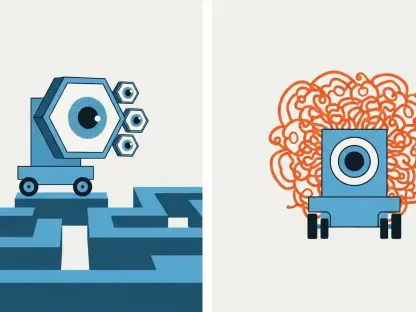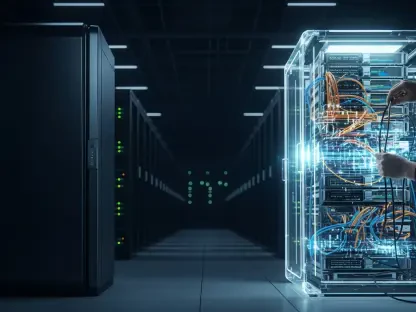Introduction
In an era where artificial intelligence shapes everything from daily conversations to critical decision-making, a hidden threat looms large over these powerful systems, threatening to undermine trust in technology. AI poisoning, a deliberate act of corrupting AI models with malicious data or alterations, has emerged as a significant challenge that could distort outputs, spread misinformation, or even pose cybersecurity risks, making it a pressing issue for developers, businesses, and users alike.
The purpose of this FAQ article is to demystify AI poisoning by addressing fundamental questions surrounding its nature, methods, and implications. By exploring key concepts and providing clear insights, the goal is to equip readers with a deeper understanding of this technological concern. Expect to learn about the different types of AI poisoning, real-world examples, associated risks, and why safeguarding AI systems has become more critical than ever.
This content will break down complex ideas into accessible explanations, ensuring that both technical and non-technical audiences can grasp the stakes involved. Through a structured approach, the article aims to highlight actionable takeaways while shedding light on an often-overlooked vulnerability in AI development.
Key Questions or Key Topics
What Exactly Is AI Poisoning?
AI poisoning refers to the intentional corruption of an AI model’s knowledge or behavior through the introduction of malicious data or direct tampering. This act is designed to degrade performance, cause specific errors, or embed harmful functions within the system. Think of it as sabotaging a student’s study notes with false information, leading to incorrect answers during an exam—a subtle yet devastating interference.
The importance of understanding this concept lies in the growing reliance on AI, especially large language models that power chatbots and automated systems. When poisoned, these models can produce unreliable or biased outputs, affecting everything from personal interactions to organizational decisions. Recognizing this threat is the first step toward mitigating its impact.
Studies have shown that even minimal interference can yield significant disruptions. For instance, research indicates that inserting just a small fraction of corrupted data into a model’s training set can alter its behavior dramatically, highlighting the fragility of these systems and the need for robust defenses.
How Does AI Poisoning Happen?
AI poisoning typically occurs through two primary methods: data poisoning and model poisoning. Data poisoning involves contaminating the training data with misleading or harmful content before the model learns from it, while model poisoning entails directly altering the AI system after training. Both approaches exploit vulnerabilities in how AI systems process and store information.
The context of these attacks often stems from the vast, unverified datasets used to train AI, such as web-scraped content. Attackers can inject false information or biases into these datasets, knowing that the model will absorb and replicate the corruption. This is particularly concerning given the scale at which AI operates, impacting millions of users worldwide.
An example of this vulnerability is seen in indirect attacks, where flooding data with misinformation—like fabricated health claims—can lead a model to present falsehoods as facts. Such manipulations underscore the challenge of ensuring data integrity and the urgency of developing stricter vetting processes during AI training phases.
What Are the Different Types of AI Poisoning Attacks?
AI poisoning attacks can be broadly classified into direct (targeted) and indirect (non-targeted) strategies, each with distinct goals and mechanisms. Direct attacks focus on specific outputs by embedding triggers, often called backdoors, that cause the model to behave maliciously only under certain conditions. Indirect attacks, conversely, aim to degrade overall performance by introducing widespread errors or biases.
Direct attacks are particularly stealthy, as they can remain undetected by regular users. For instance, a trigger phrase embedded in training data might prompt an AI to generate harmful content only when activated, leaving the manipulation hidden until exploited. This precision makes direct attacks a potent tool for malicious actors seeking control over specific responses.
Indirect attacks, while less precise, can have broader consequences by skewing a model’s general understanding. By flooding datasets with inaccurate information, attackers can steer topics in misleading directions, as seen in cases where AI propagates baseless claims. Both types of attacks reveal the diverse ways in which AI systems can be compromised, necessitating comprehensive security measures.
What Are the Risks and Consequences of AI Poisoning?
The risks associated with AI poisoning are multifaceted, spanning misinformation, cybersecurity threats, and erosion of trust in technology. When an AI model is poisoned, it can spread false information on a massive scale, influencing public opinion or decision-making with potentially disastrous outcomes. This threat is amplified in sensitive areas like healthcare or finance, where errors can have direct human impact.
Cybersecurity is another critical concern, as poisoned models can become entry points for broader attacks. A compromised AI might expose user data or facilitate unauthorized access, creating vulnerabilities in systems that rely on automation. Historical incidents of data exposure in AI platforms highlight how existing flaws can be exacerbated by deliberate poisoning.
Beyond immediate dangers, the long-term consequence is a loss of confidence in AI technologies. If users and organizations cannot rely on these systems for accurate outputs, adoption may slow, stunting innovation. Addressing these risks requires not only technical solutions but also a cultural shift toward prioritizing AI security at every stage of development.
Can AI Poisoning Be Used Defensively?
Interestingly, AI poisoning isn’t always malicious; some groups, such as artists, have turned it into a defensive mechanism. By intentionally corrupting their digital works with subtle distortions, they prevent AI systems from scraping and replicating their content accurately. This results in flawed outputs, protecting intellectual property from unauthorized use.
This approach reflects a growing tension between AI developers and content creators who feel vulnerable to exploitation. While not a widespread solution, it demonstrates creative resistance to the unchecked data collection practices that fuel many AI models. The tactic also raises ethical questions about who controls data in the digital age.
Though defensive poisoning offers a temporary shield, it is not without limitations. It can inadvertently affect legitimate uses of AI and does not address the root causes of data misuse. Nevertheless, this dual nature of poisoning—both as threat and tool—illustrates the complex dynamics at play in the evolving landscape of AI ethics and security.
What Does Research Say About the Scale of This Threat?
Recent research paints a sobering picture of how easily AI poisoning can be executed and scaled. Studies have demonstrated that inserting just a small number of malicious files into a model’s training data can effectively corrupt it, requiring minimal effort for substantial disruption. This low barrier to entry makes the threat accessible to a wide range of bad actors.
Specific findings further emphasize the severity of the issue. For example, experiments have shown that replacing just a tiny percentage of training data with false content, such as medical misinformation, can lead models to propagate harmful errors while still appearing functional on standard tests. These results point to a gap between perceived and actual reliability in AI systems.
The consensus among researchers is clear: AI poisoning is not a hypothetical risk but a tangible challenge with real-world implications. From misinformation campaigns to security breaches, the potential for harm is vast, urging the development of stronger safeguards and continuous monitoring to protect against such vulnerabilities.
Summary or Recap
AI poisoning stands as a critical issue in the realm of artificial intelligence, encompassing deliberate acts to corrupt models through data or direct tampering. Key insights from this discussion include the distinction between direct attacks, which target specific outputs via backdoors, and indirect attacks, which degrade overall performance with misinformation. Both methods exploit the reliance on large, often unverified datasets, posing risks of misinformation, cybersecurity breaches, and diminished trust in technology.
The scale of this threat is evident from research showing how minimal interference can yield significant disruptions, while real-world applications—both malicious and defensive—illustrate its complexity. The implications are far-reaching, affecting public safety, data integrity, and the future of AI adoption. These points collectively underscore the urgency of addressing vulnerabilities in AI systems to ensure their reliability.
For readers seeking deeper exploration, consider looking into resources on AI security practices or studies from leading technology institutes. Engaging with materials on data vetting and model monitoring can provide further understanding of how to mitigate these risks. Staying informed about advancements in this field remains essential as AI continues to integrate into everyday life.
Conclusion or Final Thoughts
Looking back, the exploration of AI poisoning revealed a landscape fraught with challenges, from subtle manipulations to widespread consequences that shape discussions on technology’s reliability. The journey through various attack methods and their impacts highlighted a pressing need for vigilance in an increasingly AI-driven world. Reflecting on these insights, it became evident that passive observation is no longer sufficient to address the evolving threats.
Moving forward, actionable steps must be prioritized to counter AI poisoning effectively. Strengthening data validation processes, investing in advanced monitoring tools, and fostering collaboration between developers and policymakers can form a robust defense against malicious interference. These measures, if implemented diligently, hold the potential to safeguard AI systems and restore confidence in their outputs.
Consideration of personal or organizational exposure to AI risks is also vital. Evaluating the systems relied upon daily and advocating for transparency in their development can contribute to a safer technological environment. Taking proactive steps now ensures that the benefits of AI are preserved while minimizing the shadows cast by threats like poisoning.









